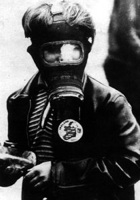
The scene for the Battle of the Bogside was set long before August 1969. For years the nationalist majority of Derry had suffered a unionist gerrymander of the city which left many Catholics living in slum conditions.
Matters came to a head in October 1968 when a civil rights march was met with force by the RUC.
Pictures of MPs leading the parade were beamed across the world, bringing the problems in Northern Ireland to a global audience.
In January 1969 the situation deteriorated further when loyalists attacked a People’s Democracy march from Belfast to Derry at Burntollet.
Days later ‘Free Derry’ was born in response to attacks on Bogside pensioners’ homes by the RUC.
The July 12 Orange Order parades in Northern Ireland in 1969 were accompanied by violence and so it was not a surprise that tensions were high leading into the Relief of Derry march planned for August 12.
The largest loyal order march of the year, the Relief of Derry, was organised annually by the Apprentice Boys to mark the end of the Siege of Derry in 1689.
For years it had been a source of tension in the city.
Nationalists believed it to be a coat-trailing exercise and it was often accompanied by violence.
Despite the rising tensions, on August 8 1969 the Stormont government decided to allow the parade to go ahead.
As it passed close to the Bogside at Waterloo Place on August 12, rioting erupted between nationalists and Apprentice Boys and their supporters.
Police immediately used armoured cars and water cannon - followed by loyalist rioters - to chase nationalists back into the Bogside.
What became know as the Battle of the Bogside began.
Rioting ebbed and flowed as day moved into night and Bogsiders, supported by nationalists who rallied from all over the north-west, forced police and loyalists back out of ‘Free Derry’.
Rioters used the vantage point of the high-rise Rossville Street flats to keep police at bay with missiles and petrol bombs.
At one stage -- with concern rising that rioters would run out of petrol -- the Derry Citizens Defence Association dispatched representatives to obtain petrol from a garage, providing a receipt against the petrol seized.
By the morning of Wednesday August 13, rioting had spread to other nationalist areas of the north, in what often resulted in a pogrom of Catholic areas.
Taoiseach Jack Lynch issued his famed and usually inaccurately quoted message that “we will not stand idly by” as he sent Irish troops to the border to establish first-aid posts.
What Lynch actually said was: “The present situation is the inevitable outcome of the policies pursued for decades by successive Stormont governments.
“It is clear also that the Irish government can no longer stand by and see innocent people injured and perhaps worse.”
With refugees fleeing south, Stormont mobilised the B-Specials who were soon repelled by the Bogside nationalists.
As the north faced into an abyss on day three, two people were killed by the RUC.
Nine-year-old Catholic boy Patrick Rooney was shot dead in his Divis Flats’ home in west Belfast when police fired from a Browning machine gun mounted on an armoured car.
In Armagh, John Gallagher was also shot dead at Cathedral Road by B-Specials.
With the RUC now completely exhausted and over-stretched, Northern Ireland prime minister James Chichester-Clarke asked the British government to deploy troops.
At 4.30pm, prime minister Harold Wilson agreed.
At around 5pm on Thursday August 14 the first soldiers of the Prince of Wales Own - on standby outside Derry - marched into the Waterloo Place front line in their distinctive ‘Tommy’ tin hats and carrying tin shields and SLR rifles.
Their commanding officer, Major David Hanson told journalists:
“Provided one is pleasant and polite, one can achieve an awful lot in this world.”
Their arrival marked the start of what the British army code-named Operation Banner, a campaign that was to last 38 years, ending on July 31 2007.
The next day, August 15, six people Herbert Roy (26), Hugh McCabe (20), Samuel McLarnon (27), Michael Lynch (28), Gerald McAuley (15) and David Linton (15) were killed by police and non-specified republican and loyalist groups in Belfast.
This led to British soldiers being deployed onto the streets of the city at 7pm.
By coincidence, the first British soldier killed in the Troubles was Hugh McCabe, a Catholic.
Home on leave, he was shot dead by police while standing, unarmedm, on the roof of the Divis Flats.
![[Irish Republican News]](https://republican-news.org/graphics/title_gifs/rn.gif)
![[Irish Republican News]](https://republican-news.org/graphics/title_gifs/harp.gif)

